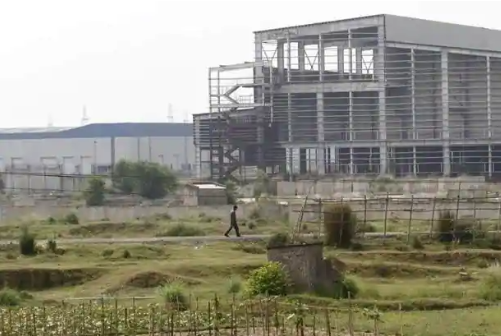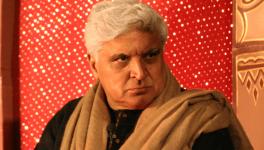Bengal Elections: Industrial Revival in State a Part of History?

Image Courtesy: Reuters
Kolkata: A study of the investments in industries during the second term of the Trinamool Congress Ministry headed by Mamata Banerjee suggests that private sector players have set up/expanded units in the information technology (IT), hospitality and cement sectors, and the size of the investments varied between Rs 100 crore and Rs 1,000 crore. But, large-scale investments have been made almost invariably by the Union government-controlled public sector enterprises (PSUs) in the coal, steel and petroleum sectors.
Also, it appears that the private sector investments did not result so much from the Bengal Global Business Summits (BGBS) as from corporates’ own judgement of congenial circumstances. BGBS was an annual event in the state government’s calendar but after the 2019 exercise, the Chief Minister announced that as corporates needed time to concretise their proposals and reach the state of implementation, business conclaves would henceforth be held every two years. After BGBS 2019, the state government had claimed it had received investment proposals Rs 2.84 lakh crore. For 2018, the figure claimed was Rs 2.19 lakh crore. No other details were shared then and are not available even now.
The private sector investments in IT can be attributed to abundant availability of skilled workers within and from the North-eastern states, saturation in Bengaluru, Hyderabad and Chennai and the state government’s readiness to relax land utilisation rules to compensate for its refusal to grant special economic zone status.
The belated nod from Infosys to mark its presence on the state’s IT scene with an investment of Rs 100 crore can be ascribed solely to relaxed land utilisation conditions. Creation of several IT growth centres in the city and in some districts including the one christened Silicon Valley at Kolkata’s New Town has enabled Wipro to expand and a good number of firms including Capgemini, Cognizant, Tech Mahindra and First Source to set up shop here. A Union government outfit that has also set up shop in the IT space is the Indian Statistical Institute.
The IT sector in West Bengal owes its origin to the untiring efforts of the Left Front government’s first CM Jyoti Basu. Overcoming several hurdles, Basu succeeded in creating the Salt Lake Electronic Export Processing Zone—which is one definite example of a sector ultimately coming of age despite a massive setback to industrialisation efforts of Basu’s successor Buddhadev Bhattacharya, caused by sustained agitations against land acquisition spearheaded by Mamata Banerjee.
Also read: West Bengal Elections: Experts Observe a Control Shift from Upper, Middle Classes
The investments in the hospitality sector can be traced to the Centre’s Look East policy and growth of trading activity in the eastern region, which resulted in a significant spurt in travel of businessmen from across the region as also from Nepal, Bhutan, Bangladesh, Singapore and China. Signs of gradual improvement in the business prospects prompted ITC and the Taj Group to scale up room capacity and Novotel, Royal Orchid, Monotel and JW Marriott, among others, to set up shop in the state.
Pick-up in real estate development and the adverse of impact of high railway freight, as also road transport costs involved in long distance movement, induced several companies to set up cement grinding units in the state. In 2011, there were just five companies accounting for 4.8 million tonnes (mt) capacity. In recent months, the capacity has crossed 20 mt with the number of companies sharing it having risen to 16. This is despite an inherent disadvantage – lack of commercially viable limestone deposits. Therefore, the state has to be content with more clinker grinding units. The important players, among others, are Neotias, JSW, Dalmia Cement (Bharat), Ramco, Star Cement.
At Basu’s initiative, work had commenced in the late 1980s on the Calcutta Leather Complex (CLC) and despite a series of glitches over the years, the CLC today is a much talked about venture in Asia. This is the unanimous opinion of industry leaders.
The state’s Finance and Industry Minister often claims that the micro, small and medium enterprise sector (MSME) sector has made significant strides, but he is always reluctant to share details on segment-specific investments and job generation.
Amit Mitra claimed on March 1 that data with banks showed that between April and January of the current financial year, they had lent Rs 63,000 crore to the MSME sector and going by the “matrix followed by the Centre, 23 lakh new jobs had been created. “The Centre now takes a multiple of 44 new jobs for every crore of investment compared with 36 it used in the past. I have taken the latter,” Mitra had said.
Also read: Investment Summits: All Dressed Up and Nowhere to Go
The important units of the Union government-controlled PSUs in West Bengal are Durgapur Steel Plant, IISCO Steel Plant (ISP) in Burnpur and Alloy Steels Plant at Durgapur of Steel authority of India Ltd, mines of Eastern Coalfields Ltd and Bharat Coking Coal Ltd of Coal India Ltd, Haldia Refinery of Indian Oil Corporation, storage terminals of Bharat Petroleum Corporation Ltd etc.
They have invested in new facilities and they regularly incur capital expenditure. The project of Oil & Natural Gas Corporation at Ashoknagar in North 24 Parganas district is a major greenfield venture under implementation. The end-to-end modernisation of the ISP completed towards the close of 2013-14 had entailed an investment of over Rs 16,000 crore. This is, by far, the single largest investment that the state has had in recent years.
But, the state’s investment outlook took a severe hit from the seven terms of the Left Front government. The pronged agitation against land acquisition at Singur in Hooghly district had forced the Tatas to opt out of the small car project on October 3, 2008, by when it had been executed over 80%.
For the same reason, the fate of the chemical hub project under the Centre’s petroleum, chemicals and petrochemicals investment region (PCIPIR) special economic zone scheme at Nandigram in Purba Medinipur district became totally uncertain. This was to entail an investment of Rs 47,000 crore. Singur and Nandigram are well known to warrant further recounting. But, the story does not end here.
After becoming CM in May 2011, Mamata Banerjee ruled out implementation of the proposed nuclear power project of Nuclear Power Corporation of India at Haripur near Junput in Contai (Kanthi) sub-division of Purba Medinipur district. The venture had envisaged setting up of six nuclear reactors of 1650 mw each – total of 10,000 mw with Russian collaboration.
The PCPIR unit and the nuclear power complex had been planned by Buddhadev Bhattacharya for comprehensive development of the backward district. In fact, he had persuaded the Centre to allot one nuclear power complex to West Bengal and Dr Manmohan Singh had accepted the same. Following Mamata Banerjee’s election to power, she had said she would set up a world class eco-tourism facility. But, these days the CM does all but speak of that eco-tourism plan.
Meanwhile, even as the Haripur nuclear power complex did not come up, Tamil Nadu now has a fully functional Kudankulam nuclear power complex which was sanctioned along with Haripur.
It remains to be seen whether the CM’s whimsical approach and lack of diplomacy in getting investments sanctioned for the state by the Centre will finally cost West Bengal the proposed deep sea port project at Tajpur, also in Purba Medinipur district.
A memorandum of understanding (MoU), envisaging 74% stake for the Centre and 26% for the state, was signed over four years back and a special purpose vehicle (SPV) christened Bhor Sagar Port Ltd was set up.
Also read: West Bengal: Despite Several Business Conclaves, Investors Reluctant
But now, Banerjee is alleging that the Centre is delaying it without rhyme or reason. Therefore, she wants it as a state project for which Nabanna has invited expressions of interest. While this happened over six weeks back, there is no information yet on whether any party has shown interest in the venture estimated to cost Rs 4,200 crore. This, despite the fact that the MoU and the SPV remain intact.
Industrialists and business leaders invariably respond to investment conclaves organised by any state government and they also submit investment proposals. But, in West Bengal it is difficult to say for sure that they have forgotten the Singur episode. The fate of the chemical hub, the Haripur nuclear power complex and the Tajpur deep sea port are also fresh in their mind. In place of the 997 acre Nano car facility, Banerjee is now talking about an agro-industry facility on 11 acres of land at Singur.
Meanwhile, Ambassador car of Hindustan Motors, Dunlop tyres and railway rolling stock of Jessop are all part of history.
Get the latest reports & analysis with people's perspective on Protests, movements & deep analytical videos, discussions of the current affairs in your Telegram app. Subscribe to NewsClick's Telegram channel & get Real-Time updates on stories, as they get published on our website.























